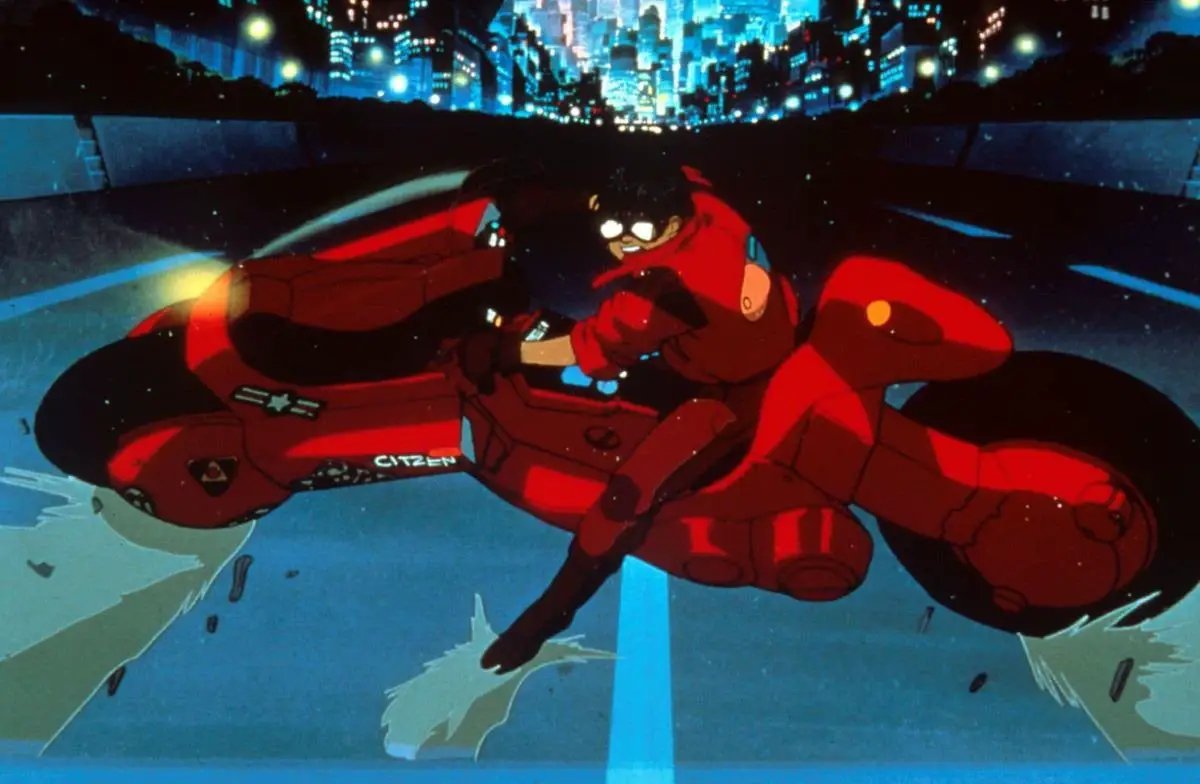This past July it was announced that Thor: Ragnarok (2017) director Taika Waititi would be returning to direct the fourth Thor movie subtitled Love and Thunder. This raised a lot of interesting questions. Why was it not titled Th4r? Would it be similar to Ragnarok in tone? But one of the loudest questions was what would happen to the Waititi helmed live-action, big-budget adaptation of Akira? A project that was apparently months away from beginning production. A few days later, it was announced that Waititi had left the project due to scheduling issues, and the film was on hold indefinitely.
Hollywood hasn’t really figured out what to do with anime and manga for the western audience. Direct adaptations like The Guyver (1991), Fist of the North Star (1995) and Crying Freeman (1995) have had limited mainstream appeal, were not really given the budget to pull off the ideas within, and languished in straight-to-VHS hell. Speed Racer (2008) was faithful, but a box office dud that was met with indifference. Ghost in the Shell (2017) was very pretty to look at and had the money to back it up, but the film was met with cries of whitewashing and diluted a lot of the philosophical and spiritual ideas present in the original work into a fairly typical cyber-cop action flick. Then earlier this year Alita: Battle Angel was a beautiful mess, but a mess nonetheless. The most success has been in films like The Matrix (1999) and Pacific Rim (2013) which were influenced by a lot of anime imagery and style, and yet presented it in a digestible format for the west.

A live-action Akira has been in development for the best part of twenty years. Once upon a time it was scheduled to be produced by Leonardo Di Caprio’s company and was going to be one film. Then, later two films with Keanu Reeves, also attached with Di Caprio. The fact that both actors are now well into middle age and the main protagonists of Akira are fifteen-year-old kids is the first warning sign. Blade (1998) helmer Stephen Norrington was the first director attached in a version that would have re-positioned the two main characters Tetsuo and Kaneda as brothers rather than orphans who grew up together. Ruairi Robinson (The Last Days on Mars, 2013) was the next director involved when Di Caprio was still attached. This new script by Book of Eli (2010) writer Gary Whitta repositioned the action from Neo Tokyo to ‘New Manhattan’ which had somehow become Japanese sovereign territory. A good way to get around the cries of whitewashing.
In 2010 Allen and Albert Hughes (Dead Presidents, 1996) came on board and the existing script was scrapped and re-written. This version was not well received by fans when it leaked online. It placed a strong female character as a typical damsel in distress instead, and the Akira of the title was not what was intended in the original work. Unknown (2011) director Jaume Collet-Serra then replaced the Hughes brothers with yet another version of the script with Jonathan Nolan (Westworld) involved in either re-writing a new version or starting from scratch, depending on who you believe. Collet-Serra dropped out due to budget issues and not really being all that interested in the property in the first place. Several other director names were then rumoured including George Miller, Justin Lin, and Christopher Nolan.
In case you don’t know, Akira takes place in 2019 in the city of Neo Tokyo which grew from a mysterious city-crushing blast in 1988 during a third world war. Neo Tokyo is a city of civil and criminal unrest, there are riots, terrorists and biker gangs ruling the streets. The story focuses on two kids; Kaneda (the brash gang leader) and Tetsuo (a timid and bullied type). Tetsuo is forever changed when he encounters a mysterious psychic child and starts to experience some kind of telekinesis of his own. Fuelled by his rage, Tetsuo rampages through the city as the populace tears itself apart and the military hunt for their potential new weapon.
Written and illustrated by Katsuhiro Otomo, the original manga of Akira was published between 1982 and 1990 in the pages of Young Magazine. It was reprinted in the west under Marvel’s Epic Comics imprint which dealt with more adult and edgy material. It was the first manga to be fully translated into English. Otomo was given the chance to direct the animated version of his epic tome which was released in 1988 in Japanese cinemas. Not having the budget or running time required to fully adapt his epic story, which was then incomplete, Otomo instead focused on the central core of the sprawling story. The film was a huge box office success in Japan when it came out. It was then picked up for distribution in the west by Streamline Pictures who put the film out in late 1989. In the UK the film was picked up by Island Visual Arts and put out through their new Manga Entertainment label.

The release of the film really kicked something off in the west in the ’90s. There was suddenly an appetite for anime and manga. If the Japanese were producing things as awesome as Akira it was assumed there was even more awesomeness waiting to be discovered. So Manga Entertainment and Central Park Media flooded us with titles ranging in quality from the great (Dominion: Tank Police 1989, Vampire Hunter D 1985) to the banal trash (Violence Jack 1986) which was sexed up with extra swear words in the English dubs. It was an interesting time of discovery, and it was genuinely great to have an alternative to the endless straight to video action schlock that flooded the market.
Akira was, however, the standout title. Even in its atrocious dub and panned and scanned versions, it was clear that this was a monumental achievement in terms of animation and complex storytelling. There had never been anything so epic, so adult and so detailed before. Even if you didn’t quite understand the plot first time, it kept you going back to learn more. Akira was influential on a whole generation of filmmakers. Without Akira, it’s unlikely we would have gotten The Matrix (1999) and it’s arguable that Edgar Wright wouldn’t have his hyper-kinetic style which often feels like anime with real people. Along with Blade Runner (1982), Akira put cyberpunk on the map as a sub-genre and gave a lot of visual interpretation to what many authors were only writing about back then.
Without someone as talented as The Waschowski siblings guiding the project and knowing exactly what it needs to be, Akira will always be a bad idea for a western adaptation. It feels like they have been making the wrong noises from the start with the potential casting and inexperienced directors attached. Taika Waititi is a great filmmaker, but let’s be honest, none of his previous work indicates that he would be a great fit for this material. Akira is dark, doom-laden and violent, it’s a world away from the Day-Glo fun of Ragnarok and the comedy of Hunt for the Wilderpeople (2016). Probably the best name rumoured to be involved was Christopher Nolan, a director who enjoys the freedom to pull off a faithful adaptation, but let’s think about this from a cultural perspective.
Akira is quintessentially Japanese. It comes from a country which is the only country to ever have an atomic bomb dropped upon it. It begins with an apocalypse, a national tragedy and then sees how we drive ourselves towards the next inevitable world-ending event. There are politics and strife that come directly out of the fall out from World War 2 and are all about a country dealing with its own scars. When looking at how to adapt the material it seems to be a case of moving it to New York post 9/11. You still have the issue of the title which is “Akira“, how do you change this for the west? Re-name it “Alan”?
There are constant indications that Hollywood wants to adapt the manga rather than the anime, and sometimes it’s one film and sometimes two. However many movies they make, they could never hope to get all of this sprawling story in one movie let alone two. The anime version doesn’t even manage to do this. No matter who you cast or where you set it, you are going to end up with cries of whitewashing, that’s the day and age we live in, the internet is not a tolerant place for cultural appropriation. Hollywood now only likes known quantities with a proven audience but Akira is a poisoned chalice. At best, going live-action will end up with a schizophrenic movie similar to Ghost in the Shell in terms of cast and character names, and writers will have to do narrative somersaults to write around the culture they ignore. The best way if they have to do this is probably to go full motion-capture animation. Cast your western actors, fine, but have them play visual representations of the originals.

For years I thought that a live-action Akira was something I would want to see, but thanks to the re-release of the anime in 2001 with a remaster, new dub and glorious widescreen, I have long since changed my mind. Akira the movie is perfect, but mainly because it isn’t perfect. It does not adapt the full saga and as a result, loses some characters and some coherence present in the manga. Thanks to the new cleaned-up versions though Akira is now easier to understand than those early poor VHS transfers, and when viewed on the big screen it is glorious. You sense that there is a lot of the story missing, but this adds to the feeling that Otomo is presenting you with a fully realised world with back story and weight. Akira is not just one of the best animated films ever made, it’s one of the best films ever made period. It’s a testament to how detailed and classic the film feels that 31 years later the film still holds up and gains new fans every year. It is an incredibly important work, not just to a culture, but to a whole generation of artists whom it influenced.
Around the same time as Waititi exiting the live-action Akira, something else was announced with a lot less fanfare. Firstly the original Akira is getting a 4K remaster and re-release in 2020 which should bring in a whole new audience. It really does look stunning at home on a big 4k screen in lieu of a cinema. The second is that Katsuhiro Otomo is now working on a sequel anime series to his original story with animation studio Sunrise. If nothing else this is the best kind of new material in this universe we can hope for. Hollywood should do the right thing, step aside, leave it alone and let the masters take care of their property the way intended.
The time for a live-action westernised version of Akira has passed. This is something that should have been done earlier this century if at all. Any presentation of this material for the west and the uninitiated now suffers the same potential problems as Ghost in the Shell and Alita: Battle Angel. The ideas in the source material and the style have been so influential and borrowed from in everything from comics and video games to Kanye West music videos, that any version of this is going to feel dated somehow. The best thing the studio that holds the rights can do is accept it as a loss, a faded dream. Some things should just be left as what they are. Imperfect maybe, but original and as creative a vision as we are lucky enough to see.

